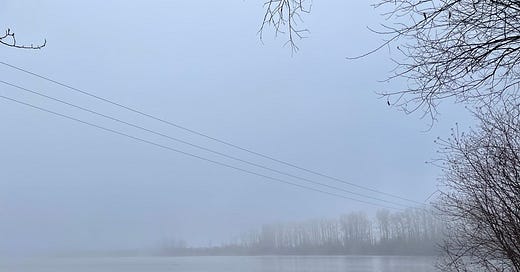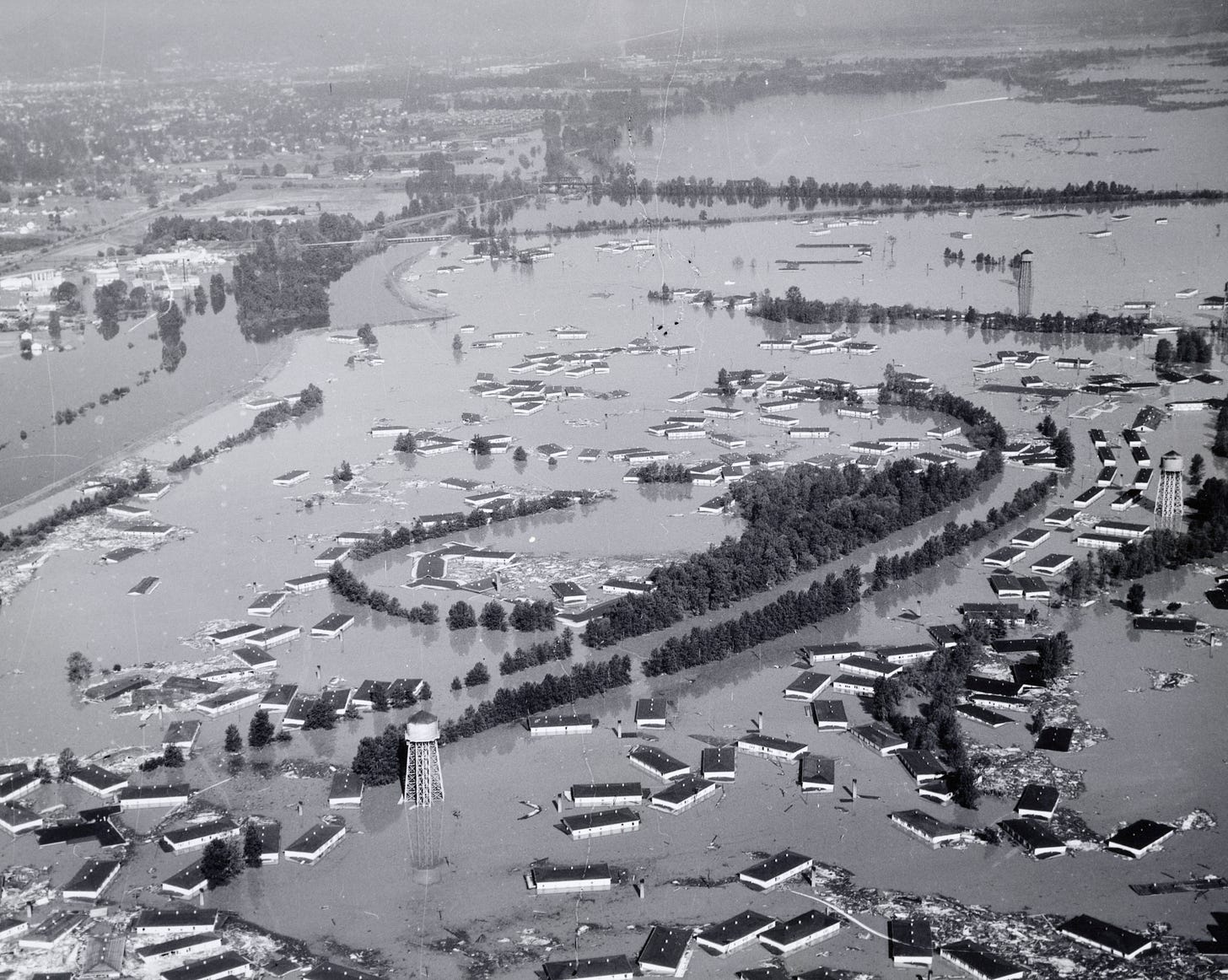I just joined the Columbia Slough Watershed Council’s Land Use Committee to help with awareness and recommending actions on land use in the watershed, with an emphasis on environmental justice. This is very exciting, because frankly, I really don’t do enough to be in public service to my community in a way that feels actionable on a broader level. It’s doubly exciting that I get to put my planning degree into good use! So, in honor of this new development, I decided to share a short piece I wrote about the Columbia Slough for the very first issue Water Logs. :)
If you live in Portland and haven’t spent much time in the Slough, I recommend checking it out. It’s a bit of an underdog in these parts, undeservedly so. There’s a lot of fascinating cultural and ecological history, wetland habitats, habitat restoration work, indigenous history, and of course, good birding.
The first two decades of my life, suburban and urban life made it so that I didn’t need to know what a watershed was. It wasn’t until I moved to Portland in my early 20’s and heard whisperings of the “Bull Run Watershed”...what even is a watershed?, I’d wonder. To know your local watershed is to be in partnership with the life it supports - including your own.
We can learn a lot when we drop into a watershed’s health: What species are moving through here? What is happening that is or isn’t supporting their health? How has water quality been impacted by nearby industry? How have people interacted with this water past and present?
When you hear the term watershed, it’s referring to wherever land receives congregating storm, ground, and snowmelt, draining into one body of water. Oregon has approximately 92 watersheds, Washington has 72, and Portland alone is home to five: the Columbia Slough, Fanno Creek, Johnson Creek, Tryon Creek, and the border-defining Willamette River, each one is a part of a bigger connective tissue.
Forking off from the Columbia River, the Columbia Slough sits above the St John’s neighborhood, it is parallel to and South of the Columbia River, originating in Fairview Lake and eventually merging with the Willamette River. It is host to many species of riparian wildlife and vegetation and is the witness to many stories of Portland’s critical human and wildlife ecology. The Slough is a leg of a journey for salmon migrating from Canada and the Willamette Valley into the Pacific Ocean. Bird species present in this area shift through the seasons, as migrating birds stop over on their way to South America or the Artic.
Humans have made this finger off the Willamette a home for many centuries. Once a home of Upper Chinook Native communities, forced removals to make way for colonial agriculture and industry forever reshaped the slough. While Native people who hold a relationship to this land are still present in the state of Oregon, the last known Chinookan elder left the Slough in 1906.
Many changes were made to the Slough in the form of levees to support agricultural and industrial efforts in the region. Nearly a century after levees were first built, WWII brought the shipbuilding industry to Portland, temporarily housing thousands of ship workers and their families in the makeshift neighborhood of Vanport on the Columbia Slough floodplains.
When the war was over, White ship workers migrated to other parts of Portland while Black residents were unable, and in many cases, prohibited from leaving due to the city’s racist housing laws. Despite the constructed levees, one rainy Memorial Day in 1948 a failed dike resulted in water rushing from the Columbia fifteen feet above the floodplain. This decimated the entire neighborhood of Vanport, leaving thousands of Portland’s Black community homeless. It has since been known as the Vanport Floods.
With each passing year since these tragedies, we can ask: How does the land and water carry this legacy of trauma it is both victim of and witness to? Is it manifested as the deteriorating riparian vegetation due to development, the overgrowth of invasive aquatic species, contaminated sediment from historical industry and sewage outfall impacted fish health, continued urbanization, the loss of indigenous stewards? I imagine the flow of the freshwater spilling from the Columbia River towards the Pacific as many deep somatic breaths: release, release, release. The connectedness of each watershed is moving, fluid, living history.







